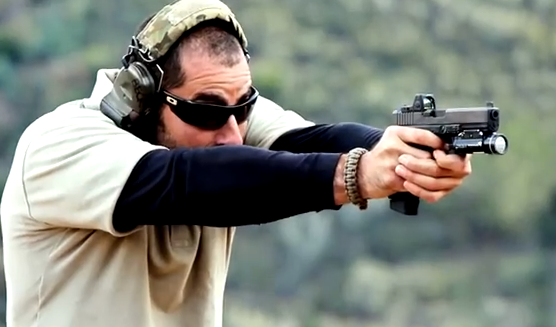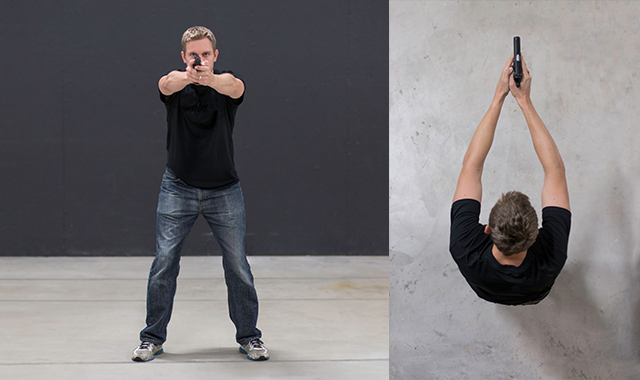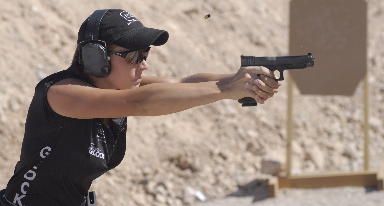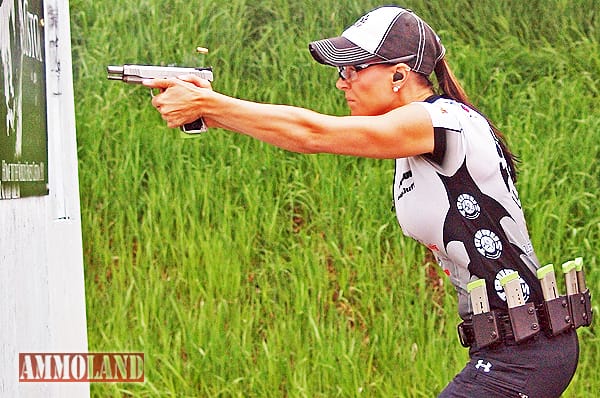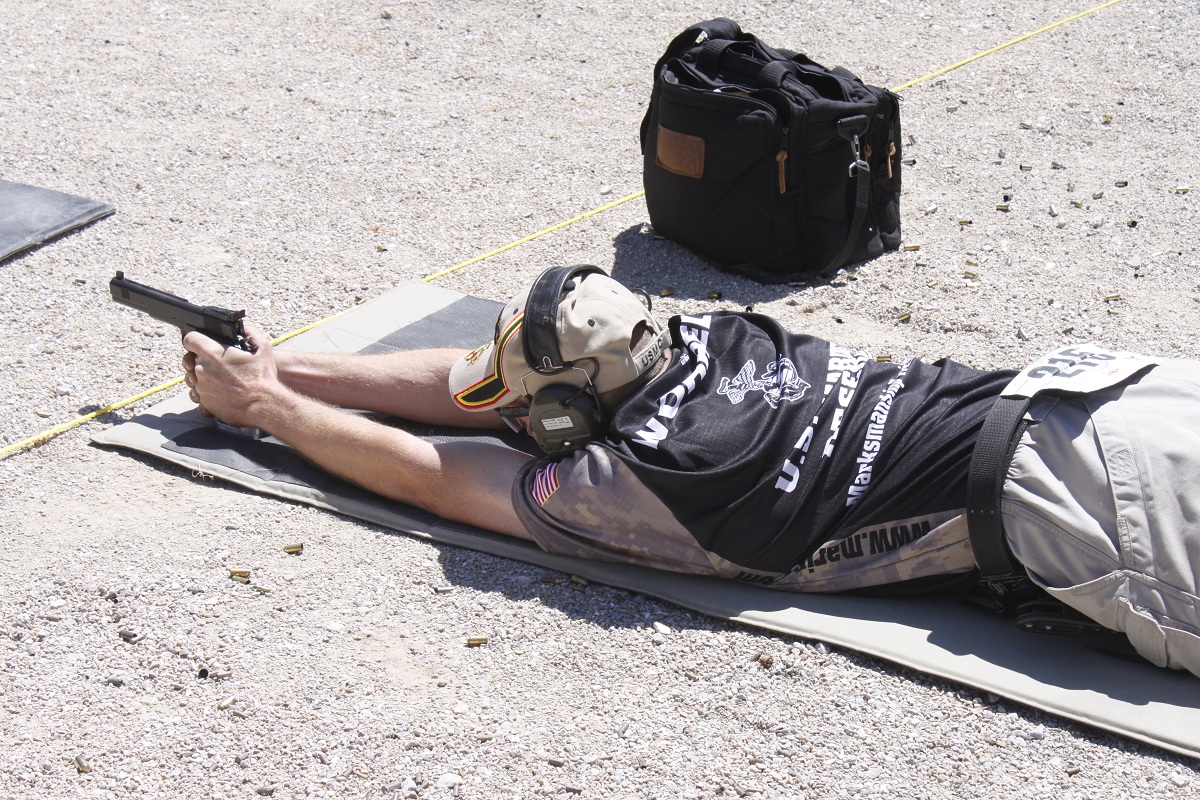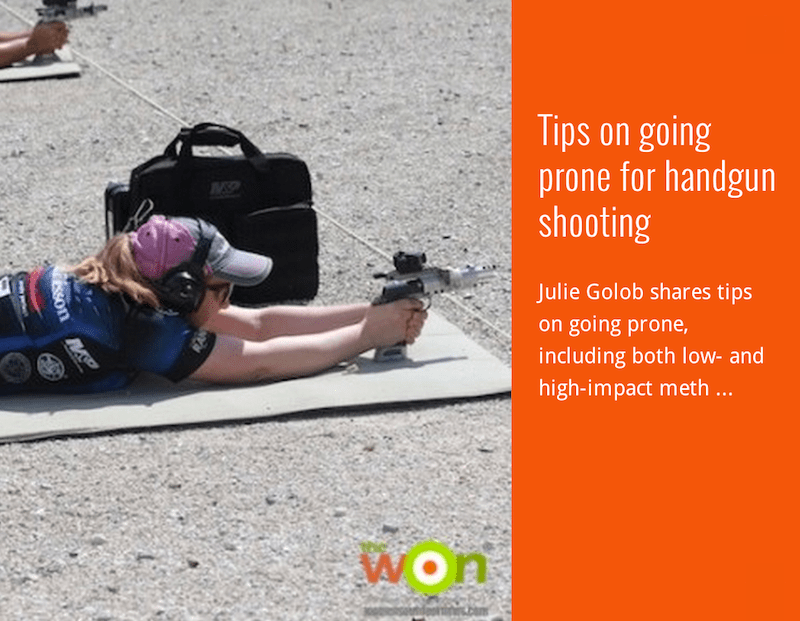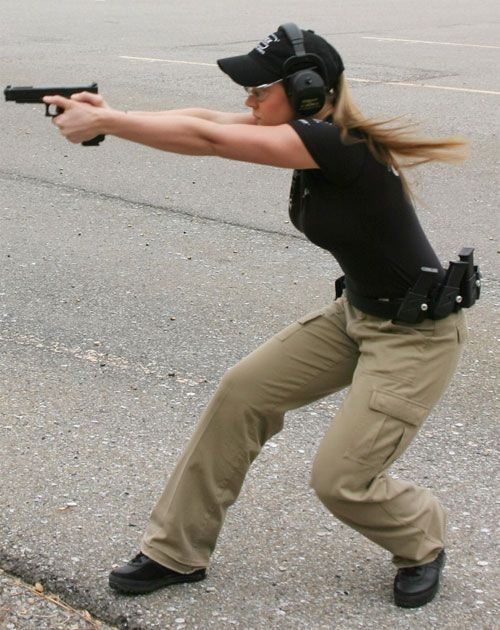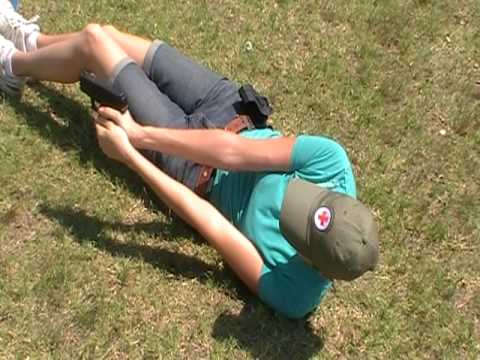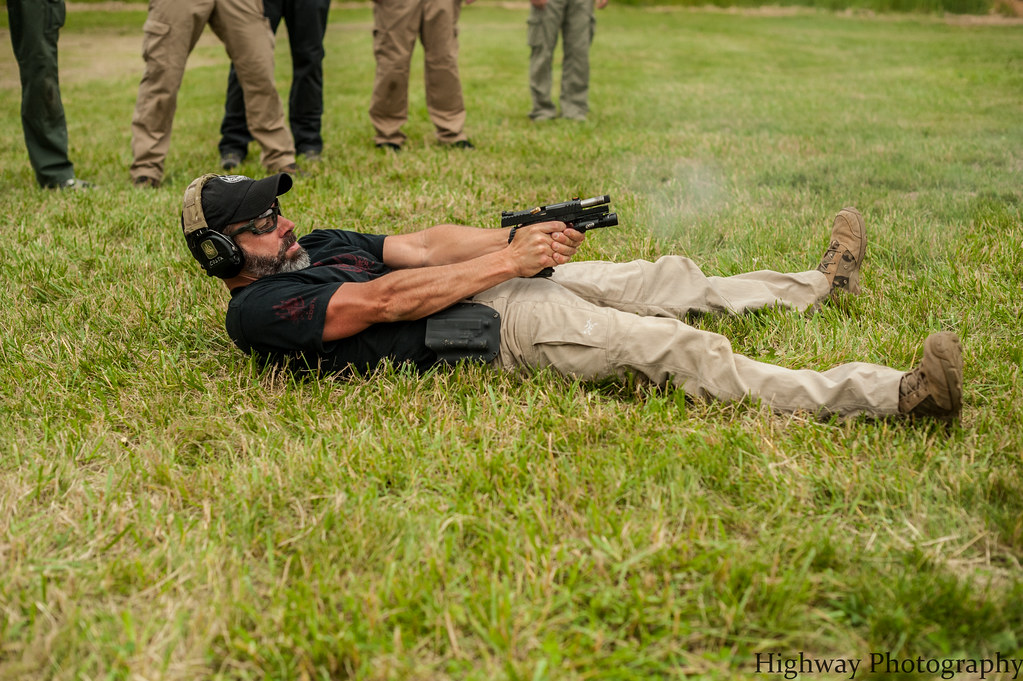A few thoughts from not-GM shooter:
1. USPSA stages are brief, and shooting positions often even briefer. It's difficult to imagine a stage that would require a shooter to stand and shoot, with the gun up, for anything approaching even 10 seconds. (Maybe a texas star that the shooter fouls up? Or an extremely complicated and difficult activator sequence where the shooter is making multiple passes on a swinger?) Even if the stage takes 30 or 40 seconds to run, a lot of that time you will have the gun "down" for reloading, running, etc. Arm fatigue isn't really a thing for the game itself.
2. Arm fatigue might be an issue for practice, particularly if you're doing a lot of group-shooting. But I'd rather break my training into smaller/briefer chunks than fundamentally change what I think will work best in a match. Others who are more hard-core about practice might disagree...
3. To the extent you are genuinely limited by arm strength, regular draws in dry fire will help with this. So would getting some little 5lb weights and raising them, with arms straight, from a by-sides position to a mummy-walk position. Doing that with one 5lb weight in each hand would provide multiple times the weight/resistance of any pistol. You don't have to gain much strength to have all the strength you need in this regard. If it's a limiting factor now, you could make it not the limiting factor very, very quickly and easily barring some intractable medical problem.*
4. There are lots of theories and ideas out there about how elbows are to be used in shooting a pistol. You'll get the torquing-inward school of thought yan' referenced above, the "shock absorbers" theory, etc. I'm not sure there's much magic to it. I can tell you that my arms are pretty far out, but not locked at the elbows. Here's how I got there:
A. I want a consistent, fast, automatic index. I can have various degrees of bend in my elbows without seeing a whole lot of difference in terms of recoil.
B. I can't seem to consistently hit the same spot/index with more than a little bend at the elbows.
C. If I go all the way out to an actual locked elbow, then the gun (and probably my head) do bounce around a bit more in recoil.
D. I've put a good deal of kinetic energy into the gun during the first half of the draw. It's moving pretty fast, and it has some weight, and therefore it has some momentum. If I try to run it all the way to the end, or if I try to jerk it to a stop very early, then the gun dips and bounces around - I have to wait for that to finish before I can pick up the sights and start shooting. If I get it maybe 12-16" in front of my chest and then let it "coast" to a stop, it ends up being not-locked, but pretty well extended... and the sights are usually "there" immediately.
Writing this made me look back at some videos of myself shooting in matches, in particular on the draw. Ugh. I clearly let the gun run to 100% extension far too often, and get the bounce/dip described above. Well, on the plus side, that's something to work on that might net some quick improvement...
* I would wager actual cash that the physical-strength limiting factor on your shooting is hand strength. Not because your hands are weak (I have no idea how strong your hands are), but because more hand strength is nearly always beneficial. You don't get to diminishing returns on hand strength until you're basically a bionic orangutan. For most mortals, you can just keep on seeing benefits by getting incrementally stronger hands.



